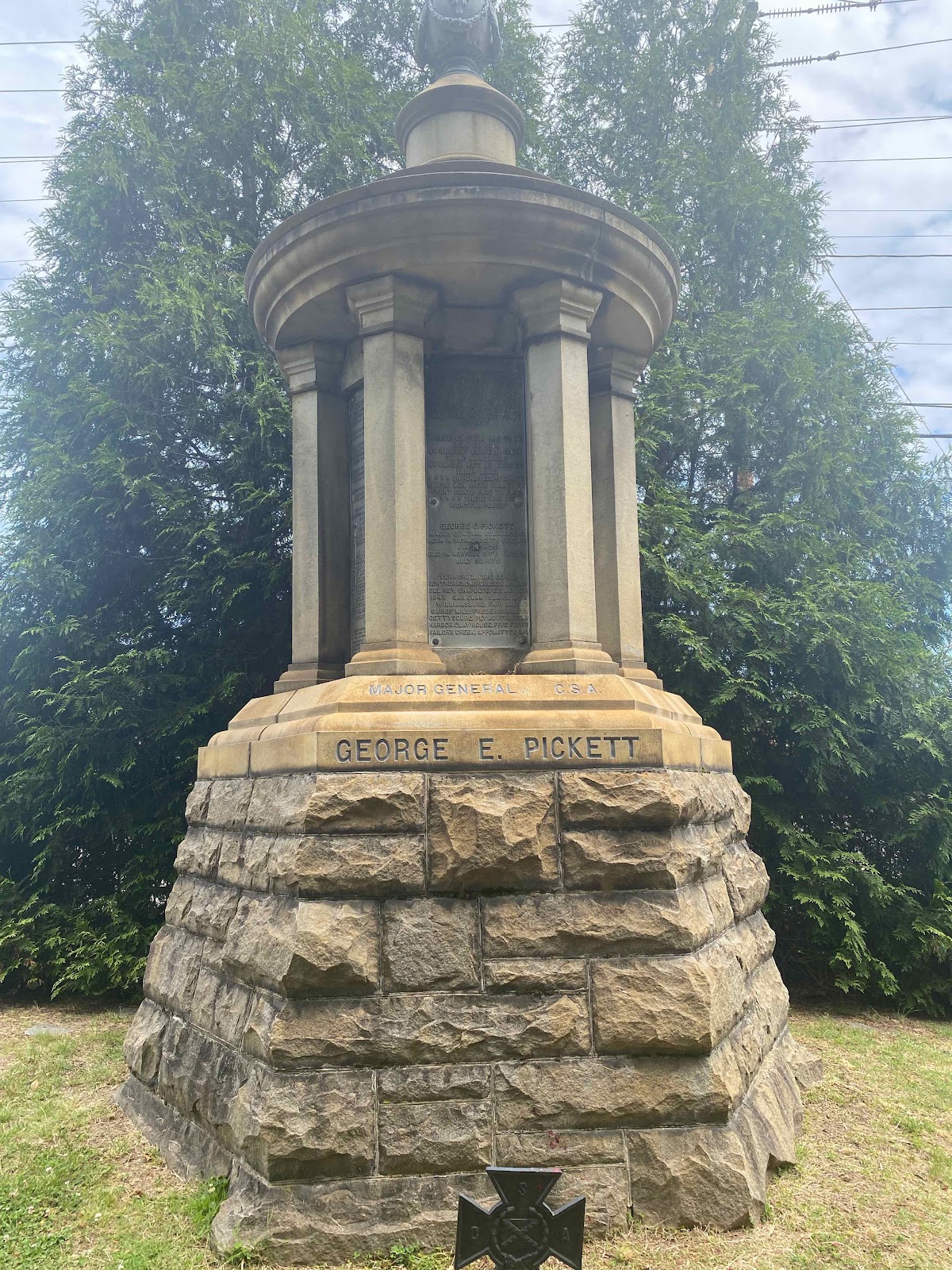In a recent issue of the New Yorker magazine, Adam Gopnik reviews a new book about the English Revolution. The article was is excellent. I am sharing it here for those who are not subscribers.
Amid the pageantry (and the horrible family intrigue) of the approaching coronation, much will be said about the endurance of the British monarchy through the centuries, and perhaps less about how the first King Charles ended his reign: by having his head chopped off in public while the people cheered or gasped. The first modern revolution, the English one that began in the sixteen-forties, which replaced a monarchy with a republican commonwealth, is not exactly at the forefront of our minds.Think of the American Revolution and you see pop-gun battles and a diorama of eloquent patriots and outwitted redcoats; think of the French Revolution and you see the guillotine and the tricoteuses, but also the Declaration of the Rights of Man. Think of the English Revolution that preceded both by more than a century and you get a confusion of angry Puritans in round hats and likable Cavaliers in feathered ones. Even a debate about nomenclature haunts it: should the struggles, which really spilled over many decades, be called a revolution at all, or were they, rather, a set of civil wars?
According to the “Whig” interpretation of history—as it is called, in tribute to the Victorian historians who believed in it—ours is a windup world, regularly ticking forward, that was always going to favor the emergence of a constitutional monarchy, becoming ever more limited in power as the people grew in education and capacity. And so the core seventeenth-century conflict was a constitutional one, between monarchical absolutism and parliamentary democracy, with the real advance marked by the Glorious Revolution, and the arrival of limited monarchy, in 1688. For the great Marxist historians of the postwar era, most notably Christopher Hill, the main action had to be parsed in class terms: a feudal class in decline, a bourgeois class in ascent—and, amid the tectonic grindings between the two, the heartening, if evanescent, appearance of genuine social radicals. Then came the more empirically minded revisionists, conservative at least as historians, who minimized ideology and saw the civil wars as arising from the inevitable structural difficulties faced by a ruler with too many kingdoms to subdue and too little money to do it with.
The point of Jonathan Healey’s new book, “The Blazing World” (Knopf), is to acknowledge all the complexities of the episode but still to see it as a real revolution of political thought—to recapture a lost moment when a radically democratic commonwealth seemed possible. Such an account, as Healey recognizes, confronts formidable difficulties. For one thing, any neat sorting of radical revolutionaries and conservative loyalists comes apart on closer examination: many of the leading revolutionaries of Oliver Cromwell’s “New Model” Army were highborn; many of the loyalists were common folk who wanted to be free to have a drink on Sunday, celebrate Christmas, and listen to a fiddler in a pub. (All things eventually restricted by the Puritans in power.)
Something like this is always true. Revolutions are won by coalitions and only then seized by fanatics. There were plenty of blue bloods on the sansculottes side of the French one, at least at the beginning, and the American Revolution joined abolitionists with slaveholders. One of the most modern aspects of the English Revolution was Cromwell’s campaign against the Irish Catholics after his ascent to power; estimates of the body count vary wildly, but it is among the first organized genocides on record, resembling the Young Turks’ war against the Armenians. Irish loyalists, forced to take refuge in churches, were burned alive inside them.
Healey, a history don at Oxford, scants none of these things. A New Model social historian, he writes with pace and fire and an unusually sharp sense of character and humor. At one emotional pole, he introduces us to the visionary yet perpetually choleric radical John Lilburne, about whom it was said, in a formula that would apply to many of his spiritual heirs, that “if there were none living but himself John would be against Lilburne, and Lilburne against John.” At the opposite pole, Healey draws from obscurity the mild-mannered polemicist William Walwyn, who wrote pamphlets with such exquisitely delicate titles as “A Whisper in the Ear of Mr Thomas Edward” and “Some Considerations Tending to the Undeceiving of Those, Whose Judgements Are Misinformed.”
For Hill, the clashes of weird seventeenth-century religious beliefs were mere scrapings of butter on the toast of class conflict. If people argue over religion, it is because religion is an extension of power; the squabbles about pulpits are really squabbles about politics. Against this once pervasive view, Healey declares flatly, “The Civil War wasn’t a class struggle. It was a clash of ideologies, as often as not between members of the same class.” Admiring the insurgents, Healey rejects the notion that they were little elves of economic necessity. Their ideas preceded and shaped the way that they perceived their class interests. Indeed, like the “phlegmatic” and “choleric” humors of medieval medicine, “the bourgeoisie” can seem a uselessly encompassing category, including merchants, bankers, preachers, soldiers, professionals, and scientists. Its members were passionate contestants on both sides of the fight, and on some sides no scholar has yet dreamed of.
Healey insists, in short, that what seventeenth-century people seemed to be arguing about is what they were arguing about. When members of the influential Fifth Monarchist sect announced that Charles’s death was a signal of the Apocalypse, they really meant it: they thought the Lord was coming, not the middle classes. With the eclectic, wide-angle vision of the new social history, Healey shows that ideas and attitudes, rhetoric and revelations, rising from the ground up, can drive social transformation. Ripples on the periphery of our historical vision can be as important as the big waves at the center of it. The mummery of signatures and petitions and pamphlets which laid the ground for conflict is as important as troops and battlefield terrain. In the spirit of E. P. Thompson, Healey allows members of the “lunatic fringe” to speak for themselves; the Levellers, the Ranters, and the Diggers—radicals who cried out in eerily prescient ways for democracy and equality—are in many ways the heroes of the story, though not victorious ones.
But so are people who do not fit neatly into tales of a rising merchant class and revanchist feudalists. Women, shunted to the side in earlier histories of the era, play an important role in this one. We learn of how neatly monarchy recruited misogyny, with the Royalist propaganda issuing, Rush Limbaugh style, derisive lists of the names of imaginary women radicals, more frightening because so feminine: “Agnes Anabaptist, Kate Catabaptist . . . Penelope Punk, Merald Makebate.” The title of Healey’s book is itself taken from a woman writer, Margaret Cavendish, whose astonishing tale “The Description of a New World, Called the Blazing World” was a piece of visionary science fiction that summed up the dreams and disasters of the century. Healey even reports on what might be a same-sex couple among the radicals: the preacher Thomas Webbe took one John Organ for his “man-wife.”
What happened in the English Revolution, or civil wars, took an exhaustingly long time to unfold, and its subplots were as numerous as the bits of the Shakespeare history play the wise director cuts. Where the French Revolution proceeds in neat, systematic French parcels—Revolution, Terror, Directorate, Empire, etc.—the English one is a mess, exhausting to untangle and not always edifying once you have done so. There’s a Short Parliament, a Long Parliament, and a Rump Parliament to distinguish, and, just as one begins to make sense of the English squabbles, the dour Scots intervene to further muddy the story.
In essence, though, what happened was that the Stuart monarchy, which, after the death of Elizabeth, had come to power in the person of the first King James, of Bible-version fame, got caught in a kind of permanent political cul-de-sac. When James died, in 1625, he left his kingdom to his none too bright son Charles. Parliament was then, as now, divided into Houses of Lords and Commons, with the first representing the aristocracy and the other the gentry and the common people. The Commons, though more or less elected, by uneven means, served essentially at the King’s pleasure, being summoned and dismissed at his will.
Parliament did, however, have the critical role of raising taxes, and, since the Stuarts were both war-hungry and wildly incompetent, they needed cash and credit to fight their battles, mainly against rebellions in Scotland and Ireland, with one disastrous expedition into France. Although the Commons as yet knew no neat party divides, it was, in the nature of the times, dominated by Protestants who often had a starkly Puritan and always an anti-papist cast, and who suspected, probably wrongly, that Charles intended to take the country Catholic. All of this was happening in a time of crazy sectarian religious division, when, as the Venetian Ambassador dryly remarked, there were in London “as many religions as there were persons.” Healey tells us that there were “reports of naked Adamites, of Anabaptists and Brownists, even Muslims and ‘Bacchanalian’ pagans.”
In the midst of all that ferment, mistrust and ill will naturally grew between court and Parliament, and between dissident factions within the houses of Parliament. In January, 1642, the King entered Parliament and tried to arrest a handful of its more obnoxious members; tensions escalated, and Parliament passed the Militia Ordinance, awarding itself the right to raise its own fighting force, which—a significant part of the story—it was able to do with what must have seemed to the Royalists frightening ease, drawing as it could on the foundation of the London civic militia. The King, meanwhile, raised a conscript army of his own, which was ill-supplied and, Healey says, “beset with disorder and mutiny.” By August, the King had officially declared war on Parliament, and by October the first battle began. A series of inconclusive wins and losses ensued over the next couple of years.
The situation shifted when, in February, 1645, Parliament consolidated the New Model Army, eventually under the double command of the aristocratic Thomas Fairfax, about whom, one woman friend admitted, “there are various opinions about his intellect,” and the grim country Protestant Oliver Cromwell, about whose firm intellect opinions varied not. Ideologically committed, like Napoleon’s armies a century later, and far better disciplined than its Royalist counterparts, at least during battle (they tended to save their atrocities for the after-victory party), the New Model Army was a formidable and modern force. Healey, emphasizing throughout how fluid and unpredictable class lines were, makes it clear that the caste lines of manners were more marked. Though Cromwell was suspicious of the egalitarian democrats within his coalition—the so-called Levellers—he still declared, “I had rather have a plain russet-coated captain that knows what he fights for, and loves what he knows, than that which you call a gentleman.”
Throughout the blurred action, sharp profiles of personality do emerge. Ronald Hutton’s marvellous “The Making of Oliver Cromwell” (Yale) sees the Revolution in convincingly personal terms, with the King and Cromwell as opposed in character as they were in political belief. Reading lives of both Charles and Cromwell, one can only recall Alice’s sound verdict on the Walrus and the Carpenter: that they were both very unpleasant characters. Charles was, the worst thing for an autocrat, both impulsive and inefficient, and incapable of seeing reality until it was literally at his throat. Cromwell was cruel, self-righteous, and bloodthirsty.
Yet one is immediately struck by the asymmetry between the two. Cromwell was a man of talents who rose to power, first military and then political, through the exercise of those talents; Charles was a king born to a king. It is still astounding to consider, in reading the history of the civil wars, that so much energy had to be invested in analyzing the character of someone whose character had nothing to do with his position. But though dynastic succession has been largely overruled in modern politics, it still holds in the realm of business. And so we spend time thinking about the differences, say, between George Steinbrenner and his son Hal, and what that means for the fate of the Yankees, with the same nervous equanimity that seventeenth-century people had when thinking about the traits and limitations of an obviously dim-witted Royal Family.
Although Cromwell emerges from every biography as a very unlikable man, he was wholly devoted to his idea of God and oddly magnetic in his ability to become the focus of everyone’s attention. In times of war, we seek out the figure who embodies the virtues of the cause and ascribe to him not only his share of the credit but everybody else’s, too. Fairfax tended to be left out of the London reports. He fought the better battles but made the wrong sounds. That sentence of Cromwell’s about the plain captain is a great one, and summed up the spirit of the time. Indeed, the historical figure Cromwell most resembles is Trotsky, who similarly mixed great force of character with instinctive skill at military arrangements against more highly trained but less motivated royal forces. Cromwell clearly had a genius for leadership, and also, at a time when religious convictions were omnipresent and all-important, for assembling a coalition that was open even to the more extreme figures of the dissident side. Without explicitly endorsing any of their positions, Cromwell happily accepted their support, and his ability to create and sustain a broad alliance of Puritan ideologies was as central to his achievement as his cool head with cavalry.
Hutton and Healey, in the spirit of the historians Robert Darnton and Simon Schama—recognizing propaganda as primary, not merely attendant, to the making of a revolution—bring out the role that the London explosion of print played in Cromwell’s triumph. By 1641, Healey explains, “London had emerged as the epicentre of a radically altered landscape of news . . . forged on backstreet presses, sold on street corners and read aloud in smoky alehouses.” This may be surprising; we associate the rise of the pamphlet and the newspaper with a later era, the Enlightenment. But just as, once speed-of-light communication is possible, it doesn’t hugely matter if its vehicle is telegraphy or e-mail, so, too, once movable type was available, the power of the press to report and propagandize didn’t depend on whether it was produced single sheet by single sheet or in a thousand newspapers at once.
At last, at the Battle of Naseby, in June, 1645, the well-ordered Parliamentary forces won a pivotal victory over the royal forces. Accident and happenstance aided the supporters of Parliament, but Cromwell does seem to have been, like Napoleon, notably shrewd and self-disciplined, keeping his reserves in reserve and throwing them into battle only at the decisive moment. By the following year, Charles I had been captured. As with Louis XVI, a century later, Charles was offered a perfectly good deal by his captors—basically, to accept a form of constitutional monarchy that would still give him a predominant role—but left it on the table. Charles tried to escape and reimpose his reign, enlisting Scottish support, and, during the so-called Second Civil War, the bloodletting continued.
In many previous histories of the time, the battles and Cromwell’s subsequent rise to power were the pivotal moments, with the war pushing a newly created “middling class” toward the forefront. For Healey, as for the historians of the left, the key moment of the story occurs instead in Putney, in the fall of 1647, in a battle of words and wills that could easily have gone a very different way. It was there that the General Council of the New Model Army convened what Healey calls “one of the most remarkable meetings in the whole of English history,” in which “soldiers and civilians argued about the future of the constitution, the nature of sovereignty and the right to vote.” The implicit case for universal male suffrage was well received. “Every man that is to live under a government ought first by his own consent to put himself under that government,” Thomas Rainsborough, one of the radical captains, said. By the end of a day of deliberation, it was agreed that the vote should be extended to all men other than servants and paupers on relief. The Agitators, who were in effect the shop stewards of the New Model Army, stuck into their hatbands ribbons that read “England’s freedom and soldier’s rights.” Very much in the manner of the British soldiers of the Second World War who voted in the first Labour government, they equated soldiery and equality.
The democratic spirit was soon put down. Officers, swords drawn, “plucked the papers from the mutineers’ hats,” Healey recounts, and the radicals gave up. Yet the remaining radicalism of the New Model Army had, in the fall of 1648, fateful consequences. The vengeful—or merely egalitarian—energies that had been building since Putney meant that the Army objected to Parliament’s ongoing peace negotiations with Charles. Instead, he was tried for treason, the first time in human memory that this had happened to a monarch, and, in 1649, he was beheaded. In the next few years, Cromwell turned against Parliament, impatient with its slow pace, and eventually staged what was in effect a coup to make himself dictator. “Lord Protector” was the title Cromwell took, and then, in the way of such things, he made himself something very like a king.
Cromwell won; the radicals had lost. The political thought of their time—however passionate—hadn’t yet coalesced around a coherent set of ideas and ideals that could have helped them translate those radical intuitions into a persuasive politics. Philosophies count, and these hadn’t been, so to speak, left to simmer on the Hobbes long enough: “Leviathan” was four years off, and John Locke was only a teen-ager. The time was still recognizably and inherently pre-modern.
Even the word “ideology,” favored by Healey, may be a touch anachronistic. The American and the French Revolutions are both recognizably modern: they are built on assumptions that we still debate today, and left and right, as they were established then, are not so different from left and right today. Whatever obeisance might have been made to the Deity, they were already playing secular politics in a post-religious atmosphere. During the English Revolution, by contrast, the most passionate ideologies at stake were fanatic religious beliefs nurtured through two millennia of Christianity.
Those beliefs, far from being frosting on a cake of competing interests, were the competing interests. The ability of seventeenth-century people to become enraptured, not to say obsessed, with theological differences that seem to us astonishingly minute is the most startling aspect of the story. Despite all attempts to depict these as the mere cosmetic covering of clan loyalties or class interests, those crazy-seeming sectarian disputes were about what they claimed to be about. Men were more likely to face the threat of being ripped open and having their bowels burned in front of their eyes (as happened eventually to the regicides) on behalf of a passionately articulated creed than they were on behalf of an abstract, retrospectively conjured class.
But, then, perhaps every age has minute metaphysical disputes whose profundity only that age can understand. In an inspired study of John Donne, “Super-Infinite,” the scholar Katherine Rundell points out how preoccupied her subject was with the “trans-” prefix—transpose, translate, transubstantiate—because it marked the belief that we are “creatures born transformable.” The arguments over transubstantiation that consumed the period—it would be the cause of the eventual unseating of Charles I’s second son, King James II—echo in our own quarrels about identity and transformation. Weren’t the nonconformist Puritans who exalted a triune godhead simply insisting, in effect, on plural pronouns for the Almighty? The baseline anxiety of human beings so often turns on questions of how transformable we creatures are—on how it is that these meat-and-blood bodies we live within can somehow become the sites of spirit and speculation and grace, by which we include free will. These issues of body and soul, however soluble they may seem in retrospect, are the ones that cause societies to light up and sometimes conflagrate.
History is written by the victors, we’re told. In truth, history is written by the romantics, as stories are won by storytellers. Anyone who can spin lore and chivalry, higher calling and mystic purpose, from the ugliness of warfare can claim the tale, even in defeat. As Ulysses S. Grant knew, no army in history was as badly whipped as Robert E. Lee’s, and yet the Confederates were still, outrageously, winning the history wars as late as the opening night of “Gone with the Wind.” Though the Parliamentarians routed the Cavaliers in the first big war, the Cavaliers wrote the history—and not only because they won the later engagement of the Restoration. It was also because the Cavaliers, for the most part, had the better writers. Aesthetes may lose the local battle; they usually win the historical war. Cromwell ruled as Lord Protector for five years, and then left the country to his hapless son, who was deposed in just one. Healey makes no bones about the truth that, when the Commonwealth failed and Charles II gained the throne, in 1660, for what became a twenty-five-year reign, it opened up a period of an extraordinary English artistic renaissance. “The culture war, that we saw at the start of the century,” he writes, “had been won. Puritanism had been cast out. . . . Merry England was back.”
There was one great poet-propagandist for Cromwell, of course: John Milton, whose “Paradise Lost” can be read as a kind of dreamy explication of Cromwellian dissident themes. But Milton quit on Cromwell early, going silent at his apogee, while Andrew Marvell’s poems in praise of Cromwell are masterpieces of equivocation and irony, with Cromwell praised, the King’s poise in dying admired, and in general a tone of wry hyperbole turning into fatalism before the reader’s eyes. Marvell’s famously conditional apothegm for Cromwell, “If these the times, then this must be the man,” is as backhanded a compliment as any poet has offered a ruler, or any flunky has ever offered a boss.
Healey makes the larger point that, just as the Impressionists rose, in the eighteen-seventies, as a moment of repose after the internecine violence of the Paris Commune, the matchless flowering of English verse and theatre in the wake of the Restoration was as much a sigh of general civic relief as a paroxysm of Royalist pleasure. The destruction of things of beauty by troops under Cromwell’s direction is still shocking to read of. At Peterborough Cathedral, they destroyed ancient stained-glass windows, and in Somerset at least one Parliamentarian ripped apart a Rubens.
Yet, in Cromwell’s time, certain moral intuitions and principles appeared that haven’t disappeared; things got said that could never be entirely unsaid. Government of the people resides in their own consent to be governed; representative bodies should be in some way representative; whatever rights kings have are neither divine nor absolute; and, not least, religious differences should be settled by uneasy truces, if not outright toleration.
And so there is much to be said for a Whig history after all, if not as a story of inevitably incremental improvements then at least as one of incremental inspirations. The Restoration may have had its glories, but a larger glory belongs to those who groped, for a time, toward something freer and better, and who made us, in particular—Americans, whose Founding Fathers, from Roger Williams to the Quakers, leaped intellectually right out of the English crucible—what we spiritually remain. America, on the brink of its own revolution, was, essentially, London in the sixteen-forties, set free then, and today still blazing. ♦



























